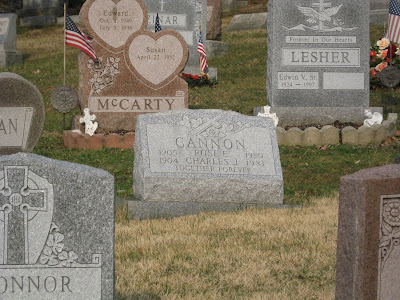 You are probably asking yourself the question, "how did I know Killala was the birth place of our Bolands and Ballina is the last location where they lived before immigrating over to the United States?" The answer is in their ship records.
You are probably asking yourself the question, "how did I know Killala was the birth place of our Bolands and Ballina is the last location where they lived before immigrating over to the United States?" The answer is in their ship records.The last address listed in Ireland for Bridget Boland McCaffery was the residence of her step-brother Michael Doherty in Ballina, County Mayo Ireland. This was the same address listed for all the Bolands with the exception of Bernard & Mary Boland Cafferty whom lived in Ballina at the time of their immigration but not with Michael Doherty.
Ella (Ellen) Boland was born Ella McCarrick. She married Michael Doherty and had at least one child before her husband died. That child was Michael Doherty. Ella McCarrick Doherty then married John Boland and as far as I know they had four children together. However, I have questioned whether or not the child known as Mary Boland Cafferty was a Doherty or a Boland? Bernard & Mary married in Ballina, County Mayo Ireland and their first child Michael Cafferty was born in Ballina before the family immigrated to the United States.
If I can locate the marriage records of Bernard & Mary Cafferty, then that question would be answered.
At this time, I do not know if Michael Doherty ever immigrated to the United States but I believe he remained in Ireland.
Killala, County Mayo Ireland was a seaside village located at the Killala Bay. During the famine, the village was hit hard. While researching this town, I came across an article which stated that over 140 bodies layed out on the roadside and were buried in a mass grave during the Great Famine. It should also be noted that the town of Ballina was also hit hard during the famine. Ballina had vast farmlands.
Other background history of Killala;
Killala is a picturesque seaside village six and a half miles North-West of Ballina in North County Mayo, famous in Irish history for the part it played in the 1798 rebellion.
History
In August of 1798 General Humbert arrived into Kilcummin pier from France and combined with the Irish forces against the English forces in the area. This year is chronicled in Irish history as the Year of the French and a book and television history celebrate this unique event.
Consequently, Killala has become a popular location for the historian and in fact was used as a major location for the 1981 multi million pound film "The Year of the French". In 1998 Killala celebrated the bicentenary by twinning with a town in Chauve in France.
Killala's skyline is dominated by a round tower, dating to the twelfth century. There is a Church of Ireland cathedral, which was built in the 17th century over the remains of a ruined Catholic cathedral.
The area is rich in archaeological remains such as:
Moyne Abbey
Rosserk Abbey
Rathfran Abbey
Meelick Castle
Humberts Rock
Céide Fields (the oldest enclosed farms in the world) are a short distance away near Ballycastle.
History
In August of 1798 General Humbert arrived into Kilcummin pier from France and combined with the Irish forces against the English forces in the area. This year is chronicled in Irish history as the Year of the French and a book and television history celebrate this unique event.
Consequently, Killala has become a popular location for the historian and in fact was used as a major location for the 1981 multi million pound film "The Year of the French". In 1998 Killala celebrated the bicentenary by twinning with a town in Chauve in France.
Killala's skyline is dominated by a round tower, dating to the twelfth century. There is a Church of Ireland cathedral, which was built in the 17th century over the remains of a ruined Catholic cathedral.
The area is rich in archaeological remains such as:
Moyne Abbey
Rosserk Abbey
Rathfran Abbey
Meelick Castle
Humberts Rock
Céide Fields (the oldest enclosed farms in the world) are a short distance away near Ballycastle.




























































